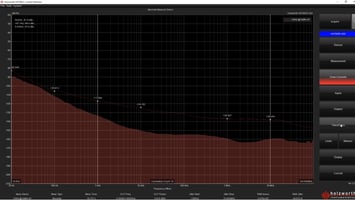In this blog post, learn how to set up the front and rear panels of the Maury Microwave HA7062D...
What Is the Key to Quantifying a Phase Noise Analyzer’s True Noise Floor?
The noise floor of a phase noise analyzer is an important metric that establishes the lowest measurable signal level. Any signal that falls below the instrument’s noise floor will be masked by that very noise.
An analyzer’s noise floor is determined by a number of factors, such as:
- The phase noise analyzer’s own architecture
- The phase noise performance of the instrument’s local oscillators (LOs)
- System thermal noise
- Internal component noise
- External test environment noise
In this post, learn how most phase noise analyzers estimate noise floor figures, while other instruments can give a truer depiction of this critical parameter.
Noise Floor Approximations
You can’t pick up two phase noise analyzers and get an identical noise floor measurement. Even if they’re the same in terms of make and model, you’d still be out of luck. No matter the manufacturer, the measurement noise floor is unique for every analyzer.
The way most modern cross-correlation phase noise analyzers determine this figure is by approximating its value. Calculation of the noise floor approximation occurs during data acquisition of a device under test (DUT), which helps estimate the measurement margins.
⚠️Keep in mind that this is an approximation, not the real noise floor of the instrument.
While useful, noise floor estimates may misguide engineers since actual noise floor limitations are still unknown.
The Actual Noise Floor
Guess what? Instruments like the Holzworth HA7000 Series Real-time Phase Noise Analyzers offer an approximated figure as well as the actual noise floor of the measurement system.
Here's the key behind this feat – the user can directly access the analyzer’s subsystems via the reconfigurable front end. Specifically, users have access to the internal phase detectors (mixers) of each channel. Two distinct non-coherent RF signal sources can connect to the DUT channel input ports to determine the instrument’s true noise floor.
There are some factors to consider that can affect noise floor data, which include:
- DUT test frequency
- Measurement offset frequency range
- Amount of cross correlations
The chosen DUTs can also affect noise floor measurement accuracy. The phase noise performance of the HA7000 Series internal LOs – the Holzworth HSX Series RF Synthesizers – needs to be matched or bested by the two signal sources. It’s therefore advised to use a pair of fixed frequency Oven Controlled Crystal Oscillators (OCXO).
Test Margins Verified
With a solid, unwavering understanding of an instrument's noise floor, test margins never have to be questioned when validating data. Users can definitively know if their data trace, under the current test conditions, is within or exceeds the limitations of the phase noise analyzer.
Want to learn more? Check out our two-part video series that breaks down the true noise floor measurement capability of Holzworth phase noise analyzers.




.png?height=200&name=Asset%202%20(2).png)
